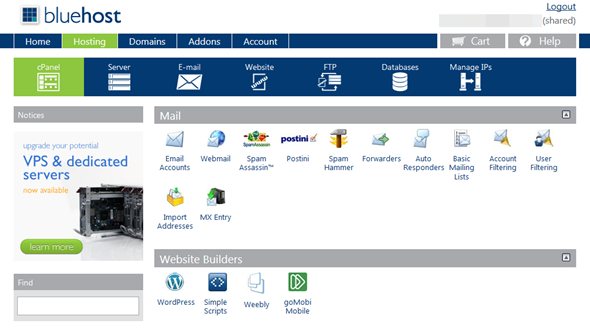
cPanel and Plesk are extremely popular hosting control panels in the market, but which is more user-friendly? In fact, the two control panels are very similar with rich features and same functionalities, thus many people may feel hard to choose between them. Therefore, we have compared the two control panels side by side, so you can decide which one might be the right choice for you.
Operating System – Plesk Wins
The first thing we have considered in this cPanel vs Plesk comparison is the operating system. cPanel functions with a wide range of Linux operating systems, such as CentOS, BSD distros, FreeBSD, CloudLinux , and Red Hat Linux, but only Linux!
Plesk, however, is more flexible, for it not only runs on many of the popular Unix operating systems, but also Windows. At present, it supports Windows Server 2008 R2 SP1, Windows Server 2008 SP2, Windows Server 2012, plus CentOS, Debian, Red Hat Enterprise Linux, Ubuntu, etc. In fact, this won’t matter to the vast majority of customers who use the shared Linux hosting, but is very attractive for customers who prefer a Windows-based hosting solution.
Added Functionality – cPanel Wins
Both cPanel and Plesk are able to give you the complete control over a vast amount of functions, such as viewing website statistics, configuring e-mail accounts, managing files and databases, controlling spams, and much more.
The only difference is that a hosting package integrated with cPanel usually offers more add-on applications than the one with Plesk like Fantastico 1-click installer, RV Skins and CSF firewall. As compared with cPanel, Plesk does not support many third-party applications other than the Microsoft products for added functionality.
User Interface – cPanel Wins
Although cPanel and Plesk have some aspects in common, they are organized differently. The developers of the 2 control panels have taken different approaches to organize the user interface. All the applications of cPanel are located on the home page with the understandable icon, so users can find what they want easily. In terms of Plesk, it is organized into sections with different applications on different pages.
In this respect, cPanel offers a more simple and intuitive UI than Plesk, for its users can find all features directly from the front page.

Another inconvenience of Plesk is that many terminologies you are familiar with cannot be found in Plesk UI, for instance, Plesk call Cron job as Scheduled Task, Parked Domains as Domain Alias, Redirect as Forwarding, and autoresponder as Auto-reply.
Set up – Plesk Wins
Without doubt, both of the 2 control panels are very easy to set up, but Plesk is more convenient, for it allows end-users and server administrators to log into the accounts through a single process. Besides, to set up the Plesk, you only need to repetitively click on a series of “Next” buttons.
cPanel, however, includes different logging processes for end-users and server administrators respectively, so it might confuse users who enter this control panel for the first time.
Summary
To be frank, choosing between cPanel and Plesk is a matter of personal choice; after all, both of the 2 control panels are easy-to-use. Generally, we recommend cPanel as a large number of our readers are shared Linux hosting customers, and cPanel works better than Plesk in the Linux environment. But if you operate a Windows environment, then you can consider Plesk.
The web hosts listed below are leading web hosting providers with cPanel.
















